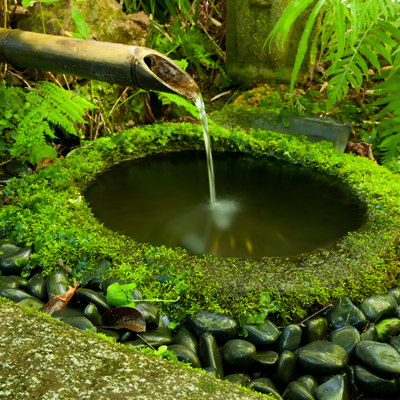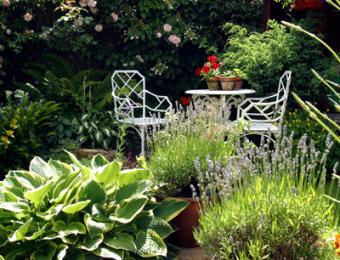
A boggy garden can be embraced or overcome with a little bit of work.
A damp, swampy garden can be caused by many factors, but poor drainage is the most common culprit. If your garden's boggy, you usually have two options: embrace it or drain it...
Option one: embrace the bog
Our perception of swamps is changing. Previously seen as wastelands and even unhealthy places, wetlands are now being embraced for their ecological importance as the 'kidneys of the earth'. Some people are even celebrating wetlands in their own backyards! As long as the foundations of your house are on solid ground, you can create a wetland beauty.
Plants
If you've got a swampy patch, there's probably already a variety of plants living there – but not all of them will be desirable. Many invasive imported plants (like cooch grass) will suppress the growth of their native – and much more attractive – neighbours.
If you're looking to build up your collection, consider Minnie daisies, bluebells and swainsonas for smaller plants. Larger plants are often easier to choose by their names, such as swamp banksia and swamp messmate. There's also the iconic collibahs, which love getting their feet wet. Swamps frequently created very unique microcosms and can have plants that are specific just to that area, so do a bit of research.
Walkways and decking
To make the most of your wetland, walkways and decking are needed to protect your plants and their habitat – and to keep the mud out of your house! As they're generally no more than 500mm from the ground, walkways are fairly easy to construct and often don't require a building permit. It still pays to double check with your local council though. For large walkways or those that cover a larger area, you may want to consult an engineer.
Many of the same tips for constructing decks apply to wooden walkways - and you'll need to pay particular attention to using materials that are suitable for soggy ground (e.g. H4 or H5 treated structural timber members) so as to . For more advice, have a look at our decking design guide.
Option two: drain It
In many cases, embracing the wetland isn't preferable - or even possible. An excess of water can threaten the foundations of your home, create dangerous slippery situations, or simply render the backyard unusable for your children and pets. For gardens where the drainage needs to be improved, there are various options.
Sub-surface trenches
Sub-surface trenches are channels under the topsoil which are filled with aggregate, that allow water to drain from a site more easily. Those living on steep, unstable or very large sites should consult an engineer or landscape contractor about installing subsurface drains, as they may have a significant impact on things like your house's structural stability, or create erosion problems.
If you live on a fairly flat site, sub-surface trenches are relatively easy to design and install yourself. You'll want your drains to divert water towards dry areas, sump pits, or (with council approval) stormwater drains. Drains you've put in yourself should not empty directly into sewers or neighbouring properties, nor should they interfere with gas, phone, or power lines. If you're considering digging your own drains, make sure you dial before you dig.
Once you've decided where the drains will be and double checked that you won't hit any utilities, it's time to get to work. Scrape away any mud and dig a drain about 300mm wide and 600mm to 1000mm (1 metre) deep. The drain needs a gradual gradient (about 1:100) to ensure that water will drain without eroding the channel.
When the channel is the right size and depth, line it with drainage cloth and fill with about 50mm of aggregate. Lay agricultural pipe over the top and cover with aggregate and a layer of drainage cloth. Backfill and cover with a light aggregate, smooth and sprinkle a small amount of water over the top.
Improve your soil structure
Heavy clay soils can cause or contribute to poor drainage. Clay is made of very fine granules that clump together, preventing water from entering the soil and causing it too pool on top instead. By adding in materials like gypsum or clay breaker, the soil structure can be 'opened up', allowing water to sink in.
Once the gypsum has loosened the soil a little, it can then be further improved with the addition of compost. When the soil structure improves, plants are more likely to thrive, which will continue to add organic matter, slow down water transfer and improve the soil structure, creating a cycle of improvement.
It's a slow process, but well worth the results.
Make your choice
Whether you choose to embrace or drain your swampy patch is up to you – either option can create beautiful, enjoyable results.

